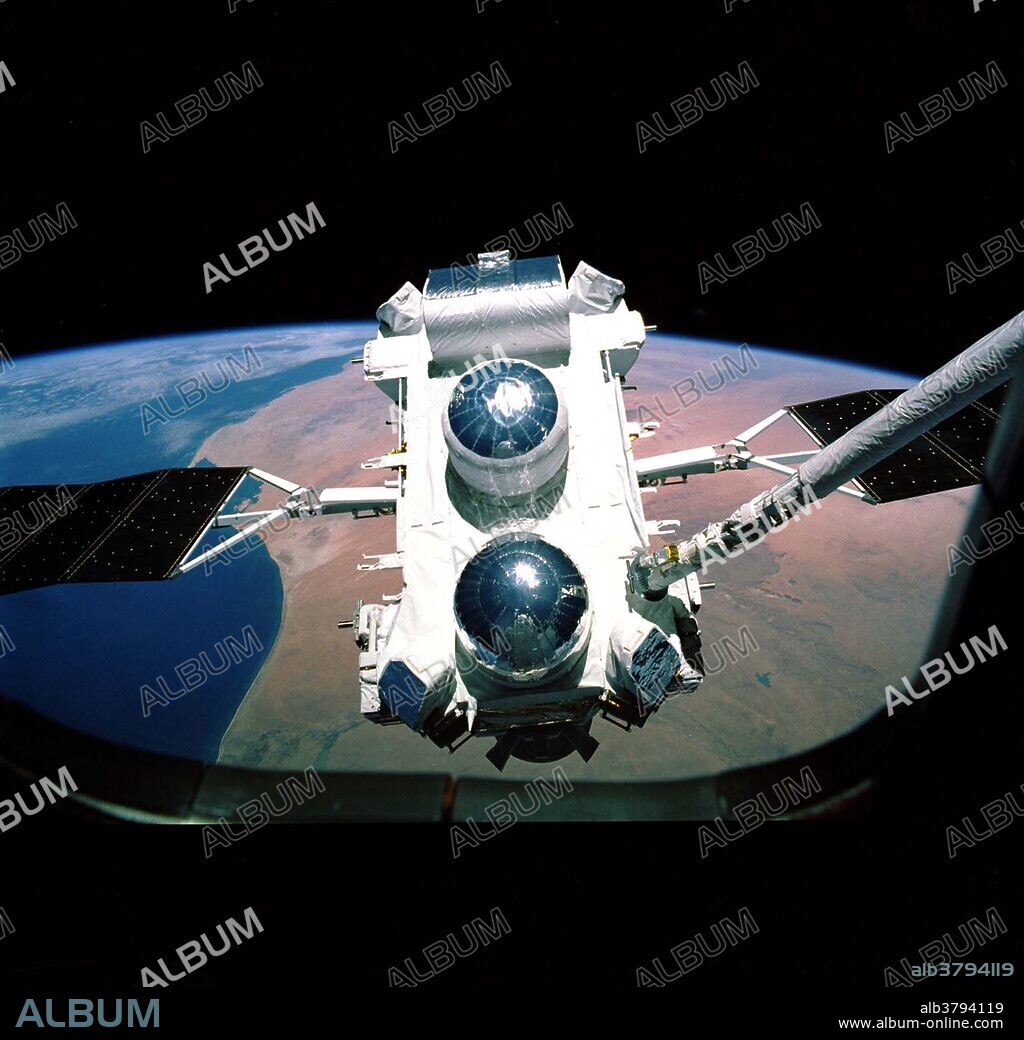alb3794119
STS-37, Compton Gamma-Ray Observatory, 1991

|
Añadir a otro lightbox |
|
Añadir a otro lightbox |



¿Ya tienes cuenta? Iniciar sesión
¿No tienes cuenta? Regístrate
Compra esta imagen.
Selecciona el uso:

Título:
STS-37, Compton Gamma-Ray Observatory, 1991
Descripción:
Ver traducción automática
Compton Gamma-Ray Observatory (GRO) being deployed by the Remote Manipulator System (RMS) arm aboard the Space Shuttle Atlantis during STS-37 mission, April 1991. The GRO reentered Earth atmosphere and ended its successful mission in June 2000. For 9 years, the GRO Burst and Transient Source Experiment, designed and built by the Marshall Space Flight Center, kept a watch on the universe to alert scientists to the invisible, mysterious gamma-ray bursts that had puzzled them for decades. By studying gamma-rays from objects like black holes, pulsars, quasars, neutron stars, and other exotic objects, scientists could discover clues to the birth, evolution, and death of stars, galaxies, and the universe. The gamma-ray instrument was one of four major science instruments aboard the Compton. It consisted of eight detectors, or modules, located at each corner of the rectangular satellite to simultaneously scan the entire universe for bursts of gamma-rays ranging in duration from fractions of a second to minutes.
Crédito:
Album / Science Source / NASA Marshall Space Flight Center
Autorizaciones:
Tamaño imagen:
3750 x 3613 px | 38.8 MB
Tamaño impresión:
31.8 x 30.6 cm | 12.5 x 12.0 in (300 dpi)
Palabras clave:
1991 • ACONTECIMIENTO • AEROESPACIAL • AMERICA • AMERICANO • ATLANTIDA • CIENCIA • DÉCADA DE 1990 • DESPLEGADA • ESTADOS UNIDOS DE AMERICA • ESTADOS UNIDOS • FAMOSA • FAMOSO • FAMOSOS • HISTORIA • HISTORICO • IMPORTANTE • NASA • NAVE ESPACIAL • PROGRAMA ESPACIAL • PTS • RAYOS GAMMA • S. XX • SIGLO XX • TECNOLOGÍA • TECNOLÓGICA • TRANSBORDADOR ESPACIAL • VEHICULO • VIAJE ESPACIAL • VUELO


 Pinterest
Pinterest Twitter
Twitter Facebook
Facebook Copiar enlace
Copiar enlace Email
Email
